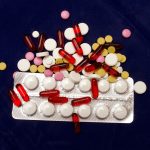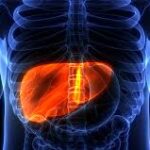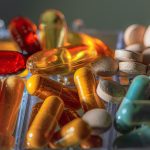List of Drugs That Can Cause Drug-induced Fatty Liver Disease

Drug-induced fatty liver disease, also known as drug-induced steatosis, refers to the condition where the liver develops excess fat accumulation due to the use of certain medications or drugs. These drugs can directly or indirectly affect the liver, leading to fat buildup and potentially causing liver inflammation and damage. Several medications and substances have been associated with drug-induced fatty liver disease.
Chronic and excessive alcohol consumption can lead to alcoholic fatty liver disease. Alcohol is processed by the liver, and excessive intake can cause fat accumulation, inflammation, and liver damage. In addition, toxins and chemicals, such as industrial solvents, pesticides, and environmental pollutants, can also contribute to fatty liver disease.
The exact mechanism by which these medications and substances lead to fat accumulation in the liver is not always fully understood. However, they can disrupt the normal metabolism of fats in the liver, leading to an imbalance between fat accumulation and removal processes.
It’s important to note that drug-induced fatty liver disease can vary in severity. In some cases, discontinuing the use of the medication or substance causing the condition may reverse the fat accumulation and liver damage. However, in other cases, the condition may progress to more severe liver diseases, such as drug-induced hepatitis or even liver failure.
How common is drug-induced fatty liver disease?
The prevalence of drug-induced fatty liver disease is challenging to estimate accurately as it can vary depending on the specific medications or substances involved, the duration and dosage of their use, and individual susceptibility factors. However, drug-induced liver injury, including drug-induced fatty liver disease, is recognized as a significant concern in clinical practice.
It is important to note that not all medications or substances cause fatty liver disease, and the incidence and prevalence can vary widely. Some medications have a higher potential for causing liver-related adverse effects, including fat accumulation in the liver. In general, the incidence of drug-induced fatty liver disease is considered relatively low compared to other forms of fatty liver disease, such as non-alcoholic fatty liver disease (NAFLD) or alcoholic fatty liver disease.
The prevalence of drug-induced fatty liver disease depends on several factors, including the frequency of use of medications or exposure to substances known to cause liver injury, the population being studied, and the overall prevalence of liver diseases in that population.
It’s worth noting that the liver is a complex organ responsible for metabolizing and detoxifying various substances, including medications. While many medications are safe and well-tolerated, some individuals may be more susceptible to drug-induced liver injury due to genetic factors or pre-existing liver conditions.
Symptoms of Drug-Induced Fatty Liver Disease
Drug-induced fatty liver disease may not always cause noticeable symptoms, especially in the early stages. However, as the condition progresses or if there is associated liver inflammation or damage, some individuals may experience the following symptoms:
1. Fatigue: Feeling tired or weak without an apparent cause can be a symptom of liver dysfunction, including drug-induced fatty liver disease.
2. Abdominal discomfort: Some individuals may experience mild abdominal pain or discomfort in the upper right side of the abdomen, where the liver is located.
3. Loss of appetite: A decrease in appetite and subsequent unintended weight loss may occur in some cases.
4. Nausea and vomiting: Liver dysfunction can lead to feelings of nausea and episodes of vomiting.
5. Jaundice: In rare cases where drug-induced fatty liver disease progresses to liver inflammation or injury, jaundice may develop. Jaundice is characterized by yellowing of the skin and eyes, dark urine, and pale-colored stools.
It is important to note that these symptoms are not specific to drug-induced fatty liver disease and can be caused by other liver conditions or unrelated factors. Some individuals with drug-induced fatty liver disease may remain asymptomatic or have mild, nonspecific symptoms.
If you suspect drug-induced fatty liver disease or experience any concerning symptoms, it is crucial to seek medical attention. A healthcare professional can evaluate your symptoms, review your medical history and medication use, perform relevant tests, and provide an accurate diagnosis and appropriate management.
Drugs That Can Cause Drug-induced Fatty Liver Disease
Here is a list of drugs commonly associated with drug-induced fatty liver disease and a brief description of how they can cause the condition:
1. Methotrexate: Methotrexate is a medication used to treat rheumatoid arthritis and certain cancers. It can lead to fatty liver disease by interfering with the metabolism of fats in the liver.
2. Tamoxifen: Tamoxifen is a medication used in breast cancer treatment. It can cause fatty liver disease by altering the balance of fat metabolism in the liver.
3. Corticosteroids: Prednisone and other corticosteroids, commonly used as anti-inflammatory medications, can cause fatty liver disease by increasing the production of fatty acids and reducing fat breakdown in the liver.
4. Amiodarone: Amiodarone is a medication used for heart rhythm disorders. It can cause fatty liver disease by inhibiting the breakdown of fats and interfering with normal liver cell function.
5. Valproic acid: Valproic acid is used to treat epilepsy and mood disorders. It can lead to fatty liver disease by affecting fatty acid metabolism and increasing fat accumulation in the liver.
6. Tetracycline antibiotics: Tetracycline antibiotics, such as doxycycline, have been associated with drug-induced fatty liver disease. The exact mechanism is not fully understood, but it may involve impairment of liver cell function and lipid metabolism.
7. Diltiazem: Diltiazem is a medication used for hypertension and certain heart conditions. It can cause fatty liver disease by altering the metabolism of fats and impairing liver cell function.
8. Sodium valproate: Sodium valproate is used to treat epilepsy and bipolar disorder. It can cause fatty liver disease by disrupting lipid metabolism and promoting fat accumulation in the liver.
9. Antiretroviral drugs: Certain antiretroviral drugs used to treat HIV infection have been associated with drug-induced fatty liver disease. The exact mechanisms may vary depending on the specific medication but can include mitochondrial dysfunction, inflammation, and lipid metabolism disruption.
10. High-dose niacin: Niacin, or vitamin B3, when taken in high doses, can cause fatty liver disease by altering lipid metabolism and promoting fat accumulation in the liver.
It’s important to note that the exact mechanisms of drug-induced fatty liver disease may vary for each medication, and in some cases, the precise mechanisms may not be fully understood. The drugs mentioned above can contribute to liver fat accumulation through various pathways, including disruption of lipid metabolism, impaired liver cell function, inflammation, and mitochondrial dysfunction. The severity and risk of drug-induced fatty liver disease can vary among individuals, and not everyone who takes these medications will develop the condition. Monitoring liver function and following medical guidance is crucial when using these drugs.
How to Recover From Drug-induced Fatty Liver Disease
Recovering from drug-induced fatty liver disease involves several steps, and it’s important to work closely with a healthcare professional to develop an individualized treatment plan. Here are some general strategies that can aid in the recovery process:
1. Discontinue or adjust medications: If a specific medication is identified as the cause of drug-induced fatty liver disease, it may be necessary to discontinue or modify the dosage of the medication under the guidance of a healthcare professional. However, this decision should be made carefully, considering the potential risks and benefits of the medication in treating the underlying condition.
2. Lifestyle modifications: Making healthy lifestyle changes can play a crucial role in recovering from fatty liver disease. These changes may include:
• Weight loss: If you are overweight or obese, losing weight gradually through a combination of a balanced diet and regular exercise can help reduce fat accumulation in the liver.
• Healthy diet: Adopt a diet rich in fruits, vegetables, whole grains, lean proteins, and healthy fats while limiting the consumption of processed foods, sugary beverages, and saturated fats.
• Regular exercise: Engage in regular physical activity, such as aerobic exercises and strength training, as it can promote weight loss, improve insulin sensitivity, and support liver health.
• Avoid alcohol: If alcohol consumption contributed to the development of fatty liver disease, it is crucial to abstain from alcohol completely to prevent further liver damage and support recovery.
3. Management of underlying conditions: If drug-induced fatty liver disease is associated with an underlying medical condition, such as diabetes or high cholesterol, proper management of these conditions is important. This may involve medication adjustments, dietary changes, and regular monitoring.
4. Liver-protective medications: In certain cases, healthcare professionals may prescribe medications that can help reduce inflammation, support liver function, and promote the regeneration of healthy liver cells. These medications should be used under medical supervision.
5. Regular monitoring: Regular follow-up visits and monitoring of liver function through blood tests and imaging studies can help track the progress of the recovery and ensure that the liver is healing properly.
It’s important to remember that the recovery process may take time, and individual responses to treatment can vary. Adhering to medical advice, maintaining a healthy lifestyle, and addressing any underlying medical conditions are key factors in recovering from drug-induced fatty liver disease.






One Comment